There's nowhere better to immerse yourself in the "real Ireland" than in Galway City and its surrounding areas. Take it all in.
It has sometimes been said that Ireland is a country with a southern European sensibility trapped in a northern European climate – in other words, it’s predominantly Catholic, big on family, and more rustic than industrial, but without the good weather.
Like many observations, it is only partly true and already out of date, but when you stroll through Galway city on a summer’s day, from Eyre Square to the Spanish Arch, down Shop Street then Quay Street, positively bustling as they are with buskers, flamenco dancers, magicians, musicians, face painters, hair-braiders, body sculptures, and caricaturists, you could be forgiven for imagining yourself in Barcelona, walking down a rather rainier Ramblas.
As the name Spanish Arch suggests, Galway’s continental connections are by no means fanciful. Its history as a trading port built up strong bonds between the city’s merchant families and France and Spain, and today the city serves as something of a summer camp for Spanish teenagers, who migrate to the city to learn English while their Irish counterparts head just a few miles up the road to the Connemara Gaeltacht to improve their Irish.
Galway Arts Festival, one of the finest in the country, is in full swing during our visit, and Race Week and the Oyster Festival are waiting impatiently in line for their turn to shine, but Galway is one of those places – young, vibrant, bohemian – that always seems to be in the party spirit. Above a doorway I spy a stone plaque commemorating Johnny ‘Massacre’ Doran, Professional Lunatic, 1975-2003 – it’s that sort of place.
If you get the chance, visit on a Saturday, for there is a wonderful food market then in front of the 700-year-old St Nicholas’ Church (where Christopher Columbus reputedly heard Mass before discovering you know where). You are spoiled for choice between sweet and savory crepes, sushi, South African bockwurst, and the most wonderful vegetarian curries.
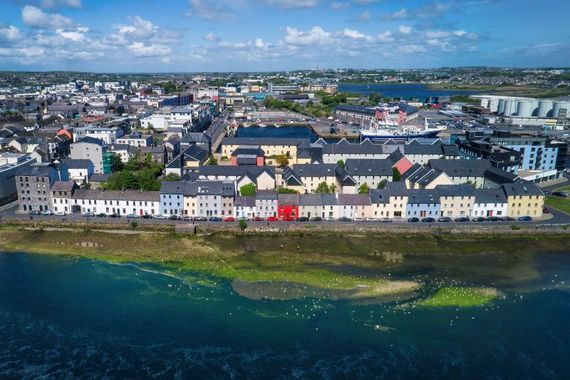
An aerial shot of Galway.
Afterward, wash it down with a beer or a coffee in Tigh Neachtain’s, a wonderfully atmospheric pub right on the main drag. If the weather is kind, by all means, sit outside and watch the world go by, but do take the time to have a prowl around in the half-light inside, for the walls are alive with festival posters and playbills from down the years, conveying a sense of the city’s rich artistic past.
The city’s culture is no less rich today. If you get the chance, and if you can get a ticket, take in a production by Garry Hynes’s Druid Theater Company, which has taken work by Synge, Martin McDonagh, and Tom Murphy not just to the Abbey in Dublin but London’s West End, Broadway and Sydney.

Are you planning a vacation in Ireland? Looking for advice or want to share some great memories? Join our Irish travel Facebook group.
In the evening, by all means, eat – Ard Bia at Nimmo’s, overlooking the Claddagh behind the Spanish Arch and right beside the City Museum, is by common consent the critics’ choice – but on no account pass up the chance to imbibe some traditional music. I recommend the Crane bar, where after dark the sun’s rays are somehow transformed into the energy of a different kind, sound waves generated by fiddlers and flutists.
One of the joys of Shop Street used to be Kenny’s Bookshop and art gallery, which I was devastated to discover has now shipped out to the suburbs, but as if to compensate, the city has the brand new Galway City Museum, a beautiful modern building in a historic setting, with spectacular views overlooking the ancient fishing village of the Claddagh (home of the Claddagh ring), River Corrib and Galway Bay.
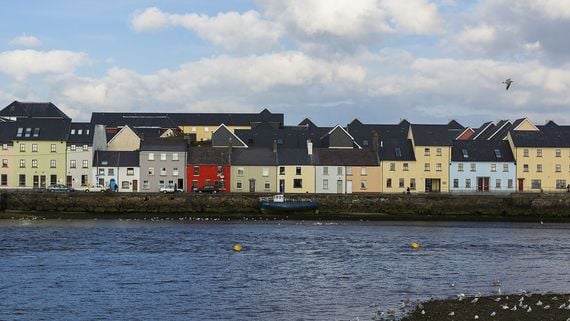
The Claddagh, Galway.
“Tradition does not mean preserving the ashes, but keeping the flame alight.” This quotation from the French writer Jean Jaures is inscribed near the entrance to the museum, and it sums up the spirit of the place, and the city itself. There is loads to see and learn here about the city; for instance, how until the railway came in 1811, Galway time was eleven and a half minutes behind Dublin time. Some would say there is still a significantly different approach to time between the two cities.
On display is a fine selection of currachs, the distinctive local boat, and the city’s medieval civic sword and mace once lost to the city but later bought and then bequeathed back to it by none other than William Randolph Hearst. The American connection doesn’t stop there – Cardinal Cushing of Boston consecrated Galway Cathedral, a handsomely successful cross of the traditional and modern. A temporary exhibition, Looking West From Galway Bay, celebrates John F. Kennedy’s visit to Galway on June 29, 1963, documenting this momentous occasion for the city using photographs, rare film footage, and personal memories.
This article was originally published in Ireland of the Welcomes magazine. Subscribe now!
“If the day was clear enough,” records a large panel bearing excerpts from JFK’s speech in Eyre Square that day, “and if you went down to the bay, and you looked west, and your sight was good enough, you would see Boston, Massachusetts. And if you did, you would see working on the docks there some Dohertys and Flahertys and Ryans and cousins of yours who had gone to Boston and made good.”
And, of course, you think with sadness of what was to befall the president less than six months later and grieve for what might have been. A bust of the late president stands in Eyre Square today.
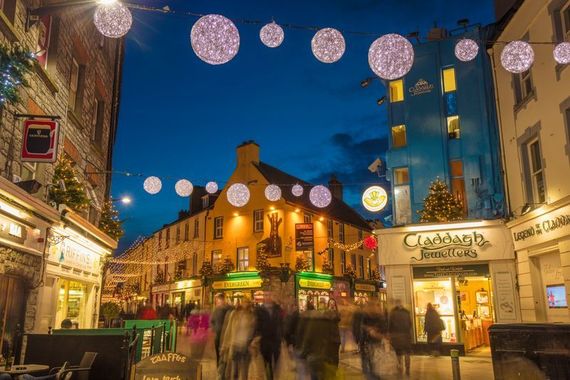
Shop Street, Galway.
Lough Corrib
Galway is, of course, famous in song for its bay, but at its back is another body of water, Ireland’s second-largest lake, Lough Corrib, and on a beautiful summer’s day there is nothing more relaxing or delightful than to make yourself comfortable on the sundeck of the Corrib Princess and enjoy a 90-minute cruise up the river, around the lake and back, passing ivy-clad ruined castles and flotillas of swans en route, with an entertaining and informative commentary thrown in for good measure, not to mention a pint of Guinness and an Irish coffee.
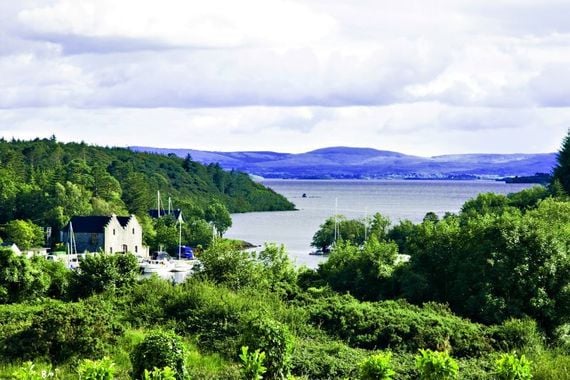
Lough Corrib.
A night or two later, enjoying a late-night drink with my uncle and his brothers in a bar near Moycullen, I was singing the cruise’s favors. Just as well, too, for who should be sitting next to me at the bar but the ship’s captain, who proceeded to buy me another drink as we put the world to rights.
Salthill
After a bracing walk along the promenade in Salthill, the city’s seaside suburb, soaking up the glorious view of Galway Bay, and letting off some steam in the lovely playground next door, we visited Atlantaquaria, Ireland’s National Aquarium, another recent addition to the city and a welcome alternative to the more traditional amusement arcades.
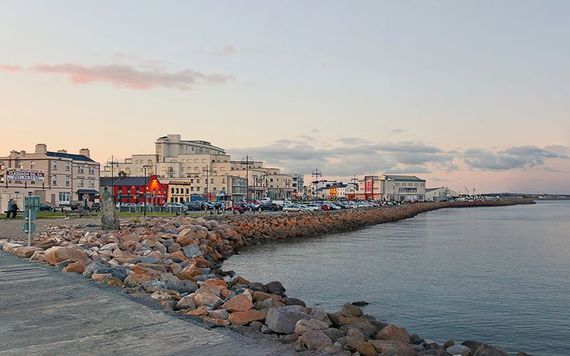
Salthill, Galway.
It’s an opportunity to reflect on an aspect of Irish life that is all too often overlooked. For instance, as I write this, I am looking at The Real Map of Ireland, a free handout from the aquarium that depicts the 220 million acres (89 million hectares) of Ireland’s marine territory. Ireland’s designated Continental Shelf includes such hidden gems as the Rockall Trough and Porcupine Seabight. Hidden depths indeed.
The fish are the main attraction, though, with over 150 species to gaze at, and it’s great fun to feed the sprats and mullets and stroke the starfish. A lot less alive, but equally impressive is the 60 ft (18 meters) skeleton of a fin whale, nicknamed Grainne Whale, a play on the name of Ireland’s pirate queen, Granuaile.
Next to the replica of Alvin, a life-size replica of the famous deep submergence vehicle, there is an exhibit dedicated to John Holland from nearby Liscannor, County Clare, inventor of the submarine who sold his device to the US Navy.
Going back in time a bit, there is also a Bearna dugout canoe, found nearby after a violent storm and dating back 5,500 years.
Connemara
If Galway is a hedonist’s heaven, Connemara, its breathtakingly beautiful hinterland, is like a vast playground for the spirit. I first visited it as a teenager and have been returning all my life, drawn back to its endless vistas of soaring crags and shimmering lakes, its seemingly boundless miles of stunning scenery, and outposts of high civilization such as Ballynahinch Castle, near Recess (what an appropriate name for a place to enjoy a break), a great spot to have lunch.
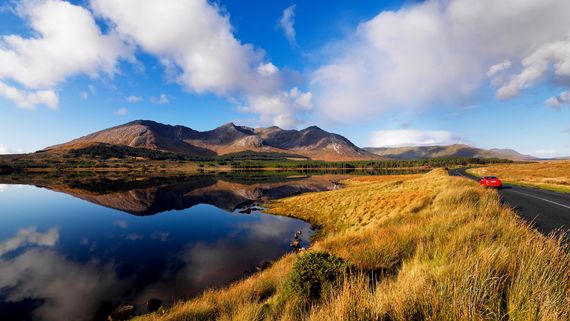
Connemara, Galway.
Then there are the beaches. Among our favorites are Ballyconneely, roughly halfway between the two thriving towns of Clifden and Roundstone, both full of bars and shops that you itch to explore, and Trá Sailin, first left out of Spiddal as you head away from the city. Silver Strand, near Delphi, has countless colored seashells underfoot like a mosaic. It feels like a trick of the senses but these places seem to smell as good as they look, the air almost sweet, not salty.
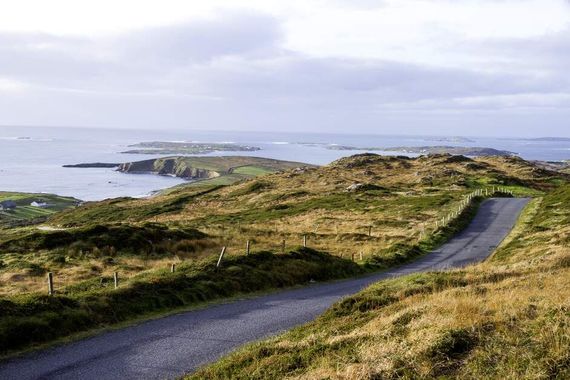
Sky Road, Clifden, County Galway.
As if nature hasn’t provided enough wonders, Connemara also has two hugely contrasting gardens that you must visit. Kylemore Abbey, between Clifden and Leenane, is Ireland’s oldest Benedictine abbey, originally founded in Ypres, Belgium, in 1665. The nuns moved to Kylemore in 1920, taking over a lakeside castle built by Mitchell Henry, a wealthy second-generation Irishman born in Manchester. Tragically, his wife died three years after it was completed in 1874 and so he built a neo-Gothic church, a cathedral in miniature, in the ground as a memorial, with a mausoleum nearby where she is buried.
You can tour most of the house and gardens, and enjoy a fine meal in the nearby restaurant and visitors’ center; but parts of the building are private, as not only is it a place of prayer and contemplation, but Kylemore has also served for several decades as an international girls’ boarding school.
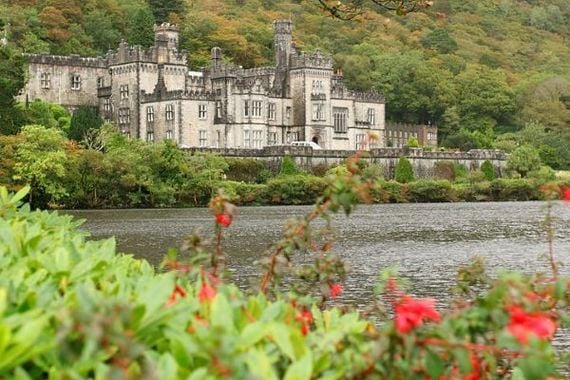
Kylemore Abbey.
Another aspect of Kylemore, however, has recently bloomed again. Its magnificent Victorian walled garden, six of whose 8.5 acres (3.5 hectares) are completely enclosed by a brick and limestone wall, has been in large part restored over the past 14 years to its original prime, and they are a marvel. Most of its 21 glasshouses have still to be rebuilt but the kitchen, flower and herb gardens, and herbaceous borders are a wonder.
Brigit’s Garden in Rooscahill
Kylemore has long since been a must-see on the tourist trail but a more recent and less famous addition is Brigit’s Garden in Rooscahill, near Oughterard. If you love gardens and nature or have a grá, or fondness, for Celtic mythology, this place will delight you; a not-for-profit project set in the middle of rolling countryside about a 20-minute drive from Galway city, just off the road to the lovely fishing village of Oughterard.
Incorporating contemporary garden design but inspired by the ancient wisdom of the Celts, the gardens are based around the four Celtic seasons, so that a walk through them is a journey through the cycle of the year, which mirrors the circle of life.
Samhain or Halloween is a time of death and rebirth. Its garden is enclosed by a long grassy bank in the shape of a sleeping woman, representing the earth in its winter rest. The pool is enclosed by birch trees, reflecting the stark simplicity of the season.
Imbolc, or spring, the garden has a path through a wildflower meadow and fruit trees to a children’s glade with basket swings and a sunken garden with symbols linked to Brigit - both the Christian saint and the goddess of the land who predated her.
The gardens also offer a nature trail, a tranquil walk through woodlands, wildflower meadows, and along a lake, with a stone chamber, fairy fort, crannóg, and calendar sundial to visit en route. The Garden Café also serves very fine soups and sandwiches.
This article was originally published in Ireland of the Welcomes magazine. Subscribe now!
Killary Fjord
Another must in Connemara is a boat trip on Ireland’s only fjord, a nine-mile-long (15 km) inlet with some spectacular scenery which you may be familiar with if you ever saw the movie The Field, starring Richard Harris and John Hurt, which was shot here.
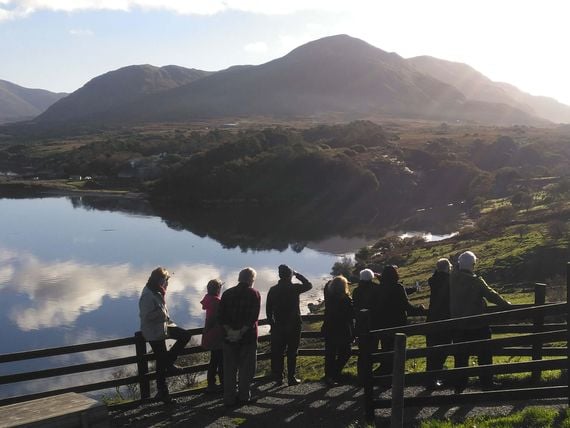
Killary Fjord, Galway.
Killary Cruises offers a money-back guarantee if you get seasick but wisely makes no promises about the weather. In fact, it boasts that it is the best rainy day experience in Connemara. It’s funny, but even the landscape seems to be wearing weatherproof clothing. As the rain lashes down, the water seems to sheet off the steeply sloping sides of the valley with fast-flowing rivulets every few meters.
But the next day, on the drive to Louisburgh, I swear there are sheep sunbathing at the side of the lake as well as ambling along the road. I am fleetingly envious, till I remember the Connemara lamb on last night’s menu. The drive from Delphi to Louisburgh along the side of Doolough Lake is one of the most lovely in the land, but the Famine memorial by the roadside casts a somber shadow on even the sunniest day, reminding you that dozens died on this path less than 200 years ago, on a futile journey seeking respite from hunger.
* Originally published in 2021, updated in December 2024.
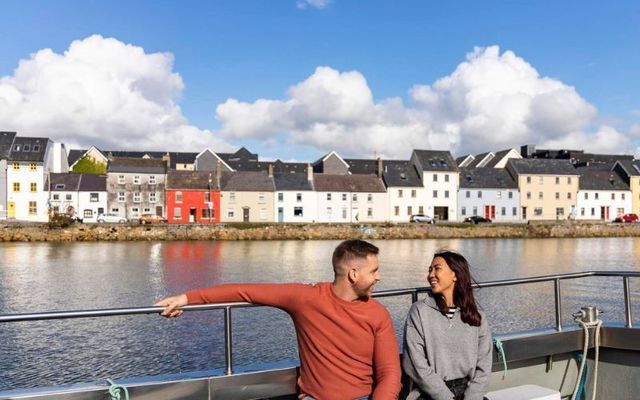
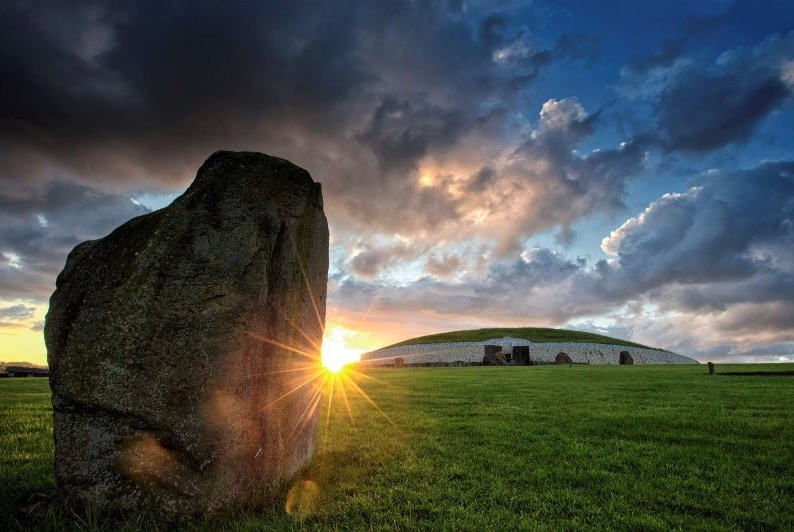

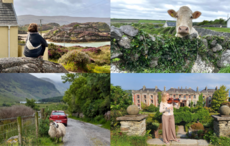
Comments